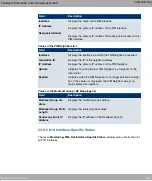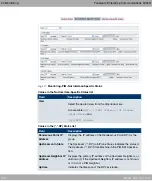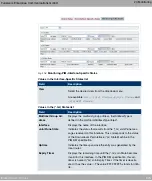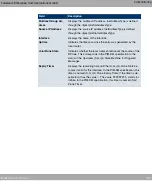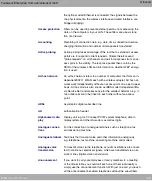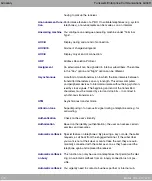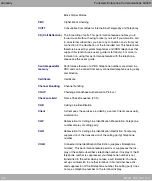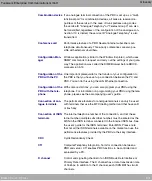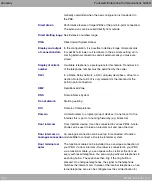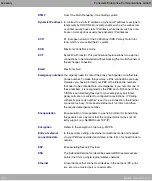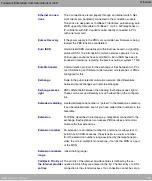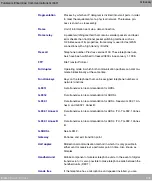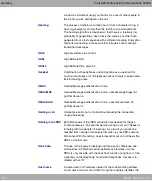
Central unit of wireless telephone devices. There are two different
types: The simple base station is used to charge the handheld unit.
For special-feature telephones, the base station can also be used as
a telephone, the handheld unit is charged using separate charging
stations.
ISDN connection that includes two basic channels (B channels)
each with 64 kbps and one control and signalling channel (D chan-
nel) with 16 kbps. The two basic channels can be used independ-
ently of each other for each service offered in the T-ISDN. You can
therefore telephone and fax at the same time. T-Com offers the Ba-
sic Rate Interface as a point-to-multipoint or point-to-point connec-
tion.
Binary digit. Smallest unit of information in computer technology.
Signals are represented in the logical states "0" and "1".
You can define a restriction on external dialling for individual sub-
scribers. The telephone numbers entered in the blacklist table can-
not be called by the terminals subject to dialling control, e.g. entry
0190 would block all connections to expensive service providers.
Block-based encryption algorithm
An algorithm developed by Bruce Schneier. It relates to a block
cipher with a block size of 64 bit and a key of variable length (up to
448 bits).
Bluetooth is a wireless transfer technology that can connect up dif-
ferent devices. Bluetooth replaces cables to connect various devices
e.g. Notebook, PC, PDA, etc. Thanks to Bluetooth, these devices
can exchange data with each other without a fixed connection. For
example, PCs, notebooks or a PDA can access the Internet or a loc-
al network. The appointments on a PDA can be synchronised with
the appointments on the PC without the need for a cable connec-
tion. Because of the many different application areas for the
Bluetooth technology, the different types of connections between the
devices are divided into profiles. A profile determines the service
(function) that the individual Bluetooth clients can use among each
other.
Bandwidth on Demand
Bootstrap protocol
Bits per second. A unit of measure for the transmission rate.
Glossary
Funkwerk Enterprise Communications GmbH
532
bintec Rxxx2/RTxxx2




